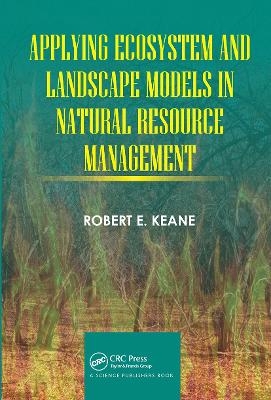
Applying Ecosystem and Landscape Models in Natural Resource Management
CRC Press (Verlag)
978-0-367-77929-0 (ISBN)
Managing today’s lands is becoming an increasingly difficult task. Complex ecological interactions across multiple spatiotemporal scales create diverse landscape responses to management actions that are often novel, counter-intuitive and unexpected. To make matters worse, exotic invasions, human land use, and global climate change complicate this complexity and make past observational ecological studies limited in application to the future. Natural resource professionals can no longer rely on empirical data to analyze alternative actions in a world that is rapidly changing with few historical analogs. New tools are needed to synthesize the high complexity in ecosystem dynamics into useful applications for land management.
Some of the best new tools available for this task are ecological and landscape simulation models. However, many land management professionals and scientists have little expertise in simulation modeling, and the costs of training these people will probably be exorbitantly high because most ecosystem and landscape models are exceptionally complicated and difficult to understand and use for local applications.
This book was written to provide natural resource professionals with the rudimentary knowledge needed to properly use ecological models and then to interpret their results. It is based on the lessons learned from a career spent modeling ecological systems. It is intended as a reference for novice modelers to learn how to correctly employ ecosystem landscape models in natural resource management applications and to understand subsequent modeling results.
Robert E. Keane has been a Research Ecologist with the USDA Forest Service, Rocky Mountain Research Station at the Missoula Fire Sciences Laboratory since 1994. His most recent research includes developing ecological computer simulation models for the exploring landscape, fire, and climate dynamics; conducting basic research in wildland fuel science; and investigating the ecology and restoration of whitebark pine.
Preface. Introduction – Who needs this book? Modeling Fundamentals – What you need to know to use this book. Project Design – How to plan a modeling project. Initialization – How to begin a simulation. Parameterization – How to tune the model for local applications. Calibration – How to tuning the model for realism. Validation – Determining model uncertainty. Execution – Implementing the model project. Analysis – Evaluating model results. Issues – Things to think about when using models.
| Erscheinungsdatum | 06.04.2021 |
|---|---|
| Verlagsort | London |
| Sprache | englisch |
| Maße | 156 x 234 mm |
| Gewicht | 317 g |
| Themenwelt | Mathematik / Informatik ► Informatik ► Theorie / Studium |
| Naturwissenschaften ► Biologie ► Ökologie / Naturschutz | |
| ISBN-10 | 0-367-77929-3 / 0367779293 |
| ISBN-13 | 978-0-367-77929-0 / 9780367779290 |
| Zustand | Neuware |
| Haben Sie eine Frage zum Produkt? |
aus dem Bereich


